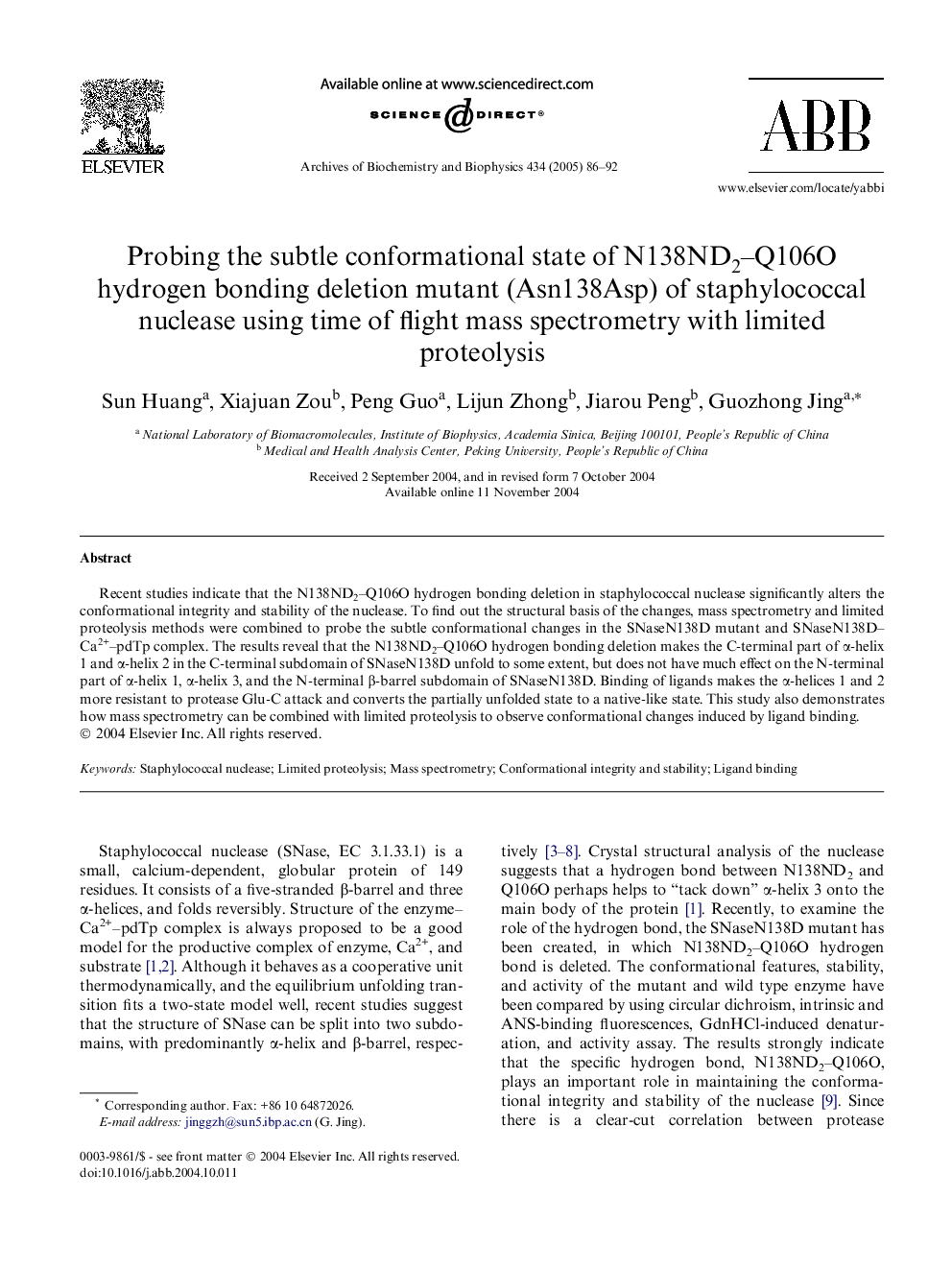| Article ID | Journal | Published Year | Pages | File Type |
|---|---|---|---|---|
| 9882356 | Archives of Biochemistry and Biophysics | 2005 | 7 Pages |
Abstract
Recent studies indicate that the N138ND2-Q106O hydrogen bonding deletion in staphylococcal nuclease significantly alters the conformational integrity and stability of the nuclease. To find out the structural basis of the changes, mass spectrometry and limited proteolysis methods were combined to probe the subtle conformational changes in the SNaseN138D mutant and SNaseN138D-Ca2+-pdTp complex. The results reveal that the N138ND2-Q106O hydrogen bonding deletion makes the C-terminal part of α-helix 1 and α-helix 2 in the C-terminal subdomain of SNaseN138D unfold to some extent, but does not have much effect on the N-terminal part of α-helix 1, α-helix 3, and the N-terminal β-barrel subdomain of SNaseN138D. Binding of ligands makes the α-helices 1 and 2 more resistant to protease Glu-C attack and converts the partially unfolded state to a native-like state. This study also demonstrates how mass spectrometry can be combined with limited proteolysis to observe conformational changes induced by ligand binding.
Related Topics
Life Sciences
Biochemistry, Genetics and Molecular Biology
Biochemistry
Authors
Sun Huang, Xiajuan Zou, Peng Guo, Lijun Zhong, Jiarou Peng, Guozhong Jing,
